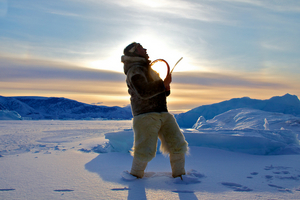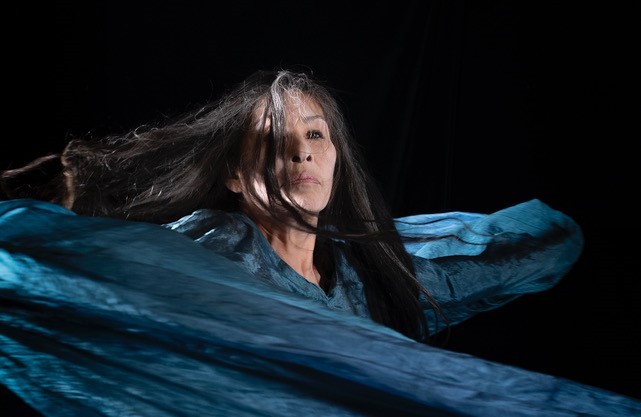Guest Blog: Michael Walling On MAGNETIC NORTH at the British Museum
Bring togethers poets, storytellers, elders, dancers, filmmakers and climate activists from Indigenous nations all around the Arctic Circle.

"Stop" said the planet, as Coronavirus swept through humanity. "Stop all this insane activity, this manic consumption, this constant violation of the natural world. You don't know what you're doing. You've lost your way. Take time to pause. Take time to contemplate. Look at what you have been destroying. Look at yourselves."
Since the pandemic began and our lives have slowed, the quality of the air we breathe through our masks has ironically become more pure, the night skies are clearer and carbon emissions have plummeted. As we are forced to confront the extreme fragility of late capitalism, we are also being exposed to the value of other ways of living that have been maintained by Indigenous communities in the face of ongoing marginalisation and repression.
We are beginning to recognise that care is not a commodity, that healing is as much a social and cultural as a medical process, that medicine is a spiritual as much as a chemical intervention. We are beginning to appreciate what the established system has long despised in its institutionalised toxicity.
Among the Indigenous Sámi of the Scandinavian Arctic, the "yoik" opens a sung dialogue with the lands and waters, asking for their kindness towards humanity. Indigenous cultures everywhere recognise what the Corona-pause is telling us so forcefully: that human beings are not separate from the natural world but a part of it, and that we exploit it at our peril. So, this is the perfect moment for us to curate a performative event with Indigenous artists from around the Arctic Circle, complementing the British Museum's major exhibition on Arctic cultures and climate.

Magnetic North will open a space for contemplation, a theatre of ceremony and meditation, a way into the creative dialogues that we need if we are going to deal with the intensity of the current tragedy and the still greater and imminent threat of climate change. It will explore new ways of linking our specific and localised concerns to the wider global picture - oddly enough using the very technologies that have so seductively suggested an artificial distance between our lives and the natural environment, but which now offer the human connections that we long for, and which remind us through their global connectivity of the deep interrelatedness of our planetary ecosystem.
Held together by the evocative and reverberant music of Sámi band VASSVIK (who, restrictions permitting, will play live in the Great Court of the Museum itself), Magnetic North will use streaming technologies to bring together poets, storytellers, elders, dancers, filmmakers and climate activists from Indigenous nations all around the Arctic Circle.
The Arctic - vast, open, white and incandescent - is itself a space of contemplation. Like the insistent nothingness of a late canvas by Mark Rothko, or the simple, monochrome, circular brushstrokes through which Zen masters convey emptiness, Śūnyatā, the Arctic presents us with a profound sense of our own fragility. Today, as the ice melts at an alarming rate, its reflection of our vulnerability is compounded by its own. As we gaze upon the ice, we see it melt from view, and with it our own capacity for survival on the Earth.
The Arctic is not truly empty; people have always lived there, and they understand better than anyone the meaning of this time. Nor is the Arctic silent: if we listen, we will hear its music, and in that music we may begin to rediscover our natural selves.
Jay Griffiths writes in her luminous and environmentally impassioned book Wild: "The Arctic is a soundscape. Under an iced sea, a wave surges, knocking on an iceberg underwater, sounding like the muted thud of wind on icy canvas. The movement of the wave rubs the sea ice against the berg, which squeaks and whistles. A little chip of ice falls and shatters a high and fragile timpani at a distance, while water sucks through a cave of ice in a sonorous glug and the berg grinds its molars on the gravel shore."
Find out more about Magnetic North at the British Museum
Comments

Videos
.png)